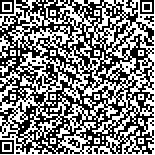| 引用本文: | 严小军,范晓,侯小琳.海藻中稀土元素的初步研究.海洋与湖沼,1999,30(5):558-563. |
| |
|
| |
|
|
| 本文已被:浏览 1425次 下载 1360次 |

码上扫一扫! |
|
|
| 海藻中稀土元素的初步研究 |
|
严小军1,2, 范晓1,2, 侯小琳3,4
|
|
1.中国科学院海洋研究所 青岛;266071;3.中国科学院高能物理研究所 北京;4.100080
|
|
| 摘要: |
| 于1996年3月,在青岛海区采集了8种常见海藻,采用中子活化法(PCA-II/NAA)测定了其中的La、Sm、Ce、Eu、Lu、Nd、Sc、Yb等8种稀土元素的总含量及其水溶性成分的比例,并与国外报道的相关数据作了比较。结果表明,海藻中含有比陆地植物丰富得多的稀土元素,绿藻中的石莼、刺松藻含量最丰,鲜重计达6.75–7.46mg/kg,最低的网翼藻为0.26mg/kg。其中30%–80%的稀土元素可以被水提取出来,海藻中稀土元素含量随着种类的不同有很大差异。海藻浓缩富集稀土元素的现象对海洋生态环境中稀土元素的分布与循环具有重要影响,在海藻作为肥料及人类食品的开发应用方面也有价值。 |
| 关键词: 海藻 稀土元素 中子活化法 健康 |
| DOI: |
| 分类号: |
| 基金项目:国家“九五”攻关课题资助项目,96—916-04-01号 |
附件 |
|
| DETERMINATION OF RARE EARTH ELEMENTS IN SEAWEEDS |
|
YAN Xiao-jun,FAN Xiao,HOU Xiao-lin
|
|
1.Institute of Oceanology, The Chinese Academy of Sciences,Qingdao, 266071;2.Institute of High Energy Physics, me Chinese Academy of Sciences, Beijing, 100080
|
| Abstract: |
| The study of the content and composition of rare earth elements in seaweeds is very important for the investigation of the biogeochemistry of the ocean, and the application of seaweed in human health or agricultural fields. Eight species of seaweeds were collected in Qingdao coastal area in 1996, and the content of rare earth elements, including La, Sm, Ce, Eu, Lu, Nd, Sc, Yb, were determined by instrumental neutron activation analysis as follow: the samples were sealed in polyethylene capsules and sent into the irradiation channel of a miniature neutron source reactor. The irradiated samples were measured with a high purity germanium detector coupled with a PC multi-channel analysis system. The element contents were calculated by the relative comparative method. Contents (mg/kg fresh weight) of La, Sm, Ce, Eu, Lu, Nd, Sc, Yb were 1.752, 0.244, 2.82, 0.039, 0.018, 1.38, 0.448, 0.052 in Codium fragile; 1.872, 0.215, 3.666, 0.053, 0.015, 1.378, 0.214, 0.046 in Ulva pertusa; 0.22, 0.031, 0.311, 0.006, 0.002, 0.18, 0.08, 0.006 in Enteromorpha sp.; ND, ND, 1.134, 0.011, ND, ND, 0.168, 0.02 in Sargassum thunbergii; 0.36, 0.041, 0.412, 0.006, ND, ND, 0.062, 0.009 in Gracilaria sp.; 0.399, 0.04, 0.826, 0.01, ND, ND, 0.12, 0.025 in Sargassum kjellmanianum; 0.085, 0.015, 0.123, 0.002, ND,ND, 0.032, 0.005 in Dictyota sp.; ND, ND, 0.345, 0.002, ND, ND, 0.043, ND, 0.391 IN Laminaria japonica. The results showed that marine algae can accumulate rare earth elements by the order as Ulva>Codium >Sargassum>Gracilaria>Laminaria>Dictyota (0.27–7.5 mg/kg fresh algal material). Part of all rare earth elements can be extracted easily by water, the solubility was ranged from 51% to 75% for La, 41% to 75% for Sm, 34% to 74% for Ce, 40% to 69% for Eu, 46% to 73% for Lu, 43% to 75% for Nd, 41% to 79% for Sc, and 31% to 74% for Yb. It implied that rare earth existed in marine algae mainly as soluble chloride salt and insoluble phosphate salt. The significance of the determination of rare earth elements related to seaweed liquid concentrate and ecological equilibrium was discussed. |
| Key words: Seaweeds, Rare earth elements, Neutron activation analysis, Health |
|
|
|
|
|
